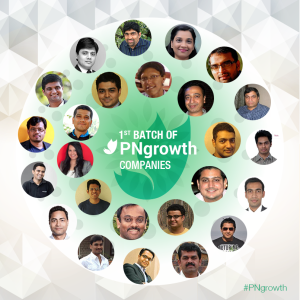As a founder or technologist mired in the day-to-day tasks of product building, it’s easy to get drawn into thinking of your product as a collection of features. But do customers also see our products as a stack of features? Or do they see products as a sum of the solutions that they offer? How do we best translate our offerings into a simple and sticky pitch that piques our customers’ curiosity and gets them to purchase/sign-up?
To find a thinking toolkit to these type of questions, I attended the iSPIRT Round Table on Startup Positioning at the WebEngage office in Mumbai this Saturday along with the founders and product leaders of 14 other unique startups.
 Over six intellectually stimulating hours, all of us had our product pitches brutally critiqued by everybody else under the guiding presence of Shankar Maruwada, an ex-P&G marketing wiz and the man who got millions of Indians to sign-up for the Aadhar card.
Over six intellectually stimulating hours, all of us had our product pitches brutally critiqued by everybody else under the guiding presence of Shankar Maruwada, an ex-P&G marketing wiz and the man who got millions of Indians to sign-up for the Aadhar card.
Here are the Top 8 things I took away from the #PlaybookRT.
- First, make sure you are positioning to the right customer—A startup can have multiple “customers”. The customer who will purchase and implement your product may not be the same as the one who will use it. Which one of them do you pitch to? Example—should RippleHire (an employee referral hiring tool that uses gamification) position itself to a company’s Chief Recruitment Officer who will deploy the product in his company, or to the company’s employees who will be the actual end users critical to the product’s actual usage?
- Then, know your customers well—What 3-4 specific things do you know about your customer, which you can use to create a pitch? This resonated very well with me. Having interviewed a bunch of Instamojo’s customers in the past few days and quizzed them about the outcomes they were trying to achieve by using Instamojo, I had learned that “non tech-savviness” was a common characteristic among most of them. This insight suggested to me that Instamojo’s positioning should embed the fact that it requires “Zero IT Knowledge”.
- Find out the customer benefits that your product delivers and communicate them—Beware of confusing features with customer benefits! Features define the tasks that a product completes. Benefits capture the outcomes that customers achieve as a result of using the features.
- If your product provides multiple benefits, prioritise them in decreasing order of importance and then communicate just the one or two most essential ones in your positioning. Communicating too many benefits at the same time could make for a confusing message and take the focus away from your product’s superpowers.
- Beware of the “Curse of Knowledge”—As product leaders, we are prone to become so close to the body of knowledge surrounding the product and internalise so many assumptions that we forget what it is like being the user. Positioning the product correctly requires us to place ourselves outside the realm of features, technologies, implementations and industry terminology and speak in the language of customer’s problems and our solutions to them. Example—product leaders of Enterprise Resource Planning (ERP) software may forget that many in their target customer base may not even know what ERP stands for, though the same customers may still be facing the problems that ERP software aims to solve.
- Use the power of analogies—Often, a complex concept can be explained simply using the construct “We are the X of Y”. Example—“Foodpanda is the Uber of Food Delivery.” or “Wishberry is the Kickstarter of India”. While such a construct may not always fully convey the idea, it catches you the customer’s attention enough for you to then elaborate further on how your product’s benefits make the analogy valid.
- Use the power of stories—A powerful customer story can illustrate your product’s benefits and allow the target of your positioning to visualise herself in the story. Example— Apartmentadda helped an amnesiac senior citizen find his way home. His apartment complex’s security guard pinged all its residents on SMS about the lost gentleman using ApartmentAdda. Among those who received the SMS was the old man’s son, who promptly arranged for his pickup.”
- Use numbers for a strong impact—What numbers can you say about your product that will help your prospective customers visualise its impact on their lives? Numbers can be about the number of customers whose lives you have changed, the number of steps (hopefully very few) it takes to get started with your product, the number of transactions your product did in the last X hours, the number of hours of customer work your product will end up saving, etc.
Guest Post by Apoorv Pandit, Sr. Product Manager, Instamojo




 Over six intellectually stimulating hours, all of us had our product pitches brutally critiqued by everybody else under the guiding presence of
Over six intellectually stimulating hours, all of us had our product pitches brutally critiqued by everybody else under the guiding presence of 